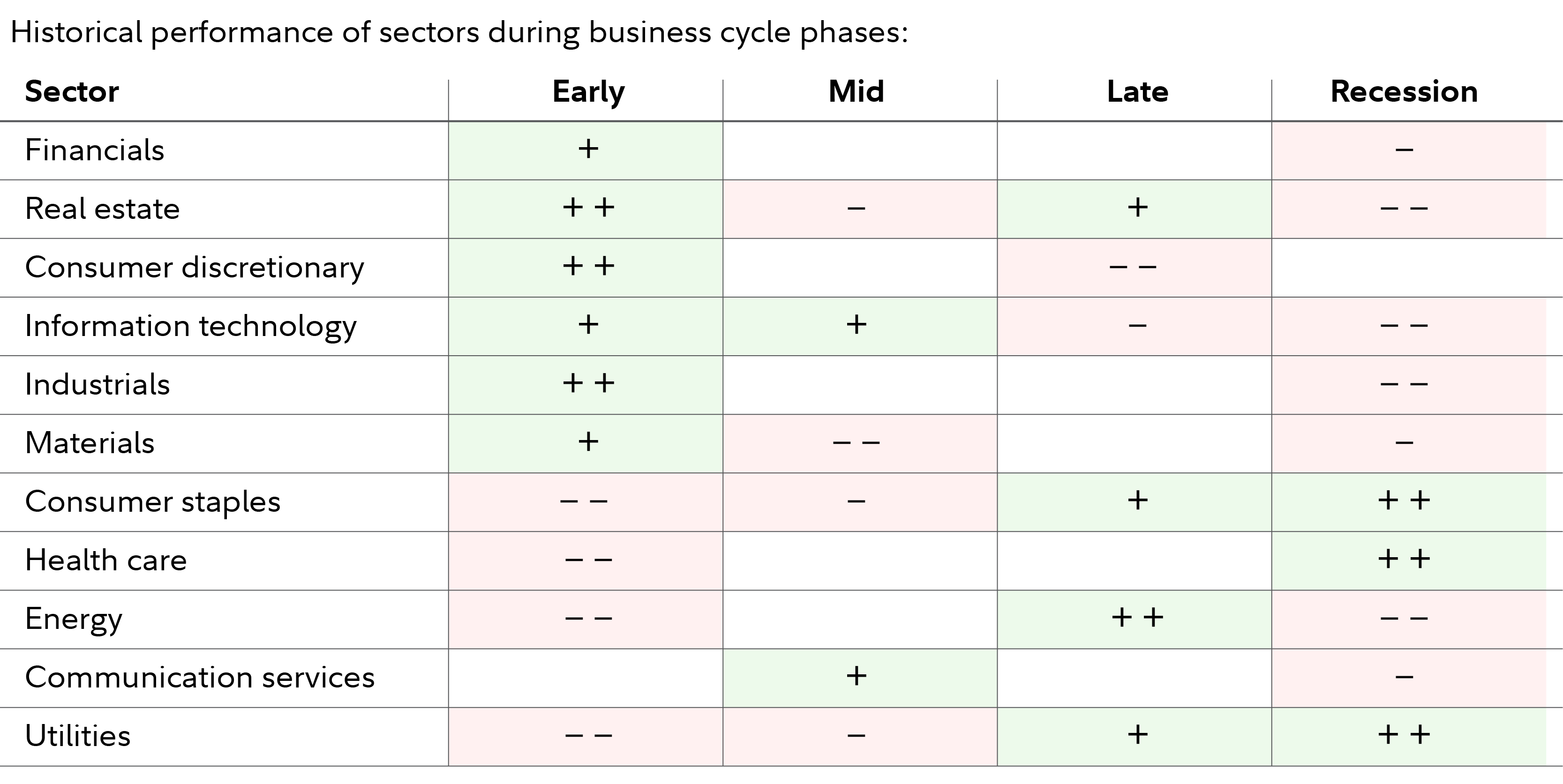Markets are on a historic run. Global stocks surged for the second straight year, led by US stocks, which gained 23% on a price return basis (following a 24% gain in 2023). A range of assets hit all-time highs during the year. Some highlights include:1
- The S&P 500 touched 6,000
- The Dow surpassed 40,000
- Bitcoin climbed above $100,000
- Gold topped $2,700 per ounce
In addition to momentum heading into 2024, some key factors helped propel stocks.
Energy costs were tame. Oil prices stayed contained, for the most part, between $70 and $80 per barrel during the year—despite significant geopolitical conflicts in oil-producing regions and elsewhere.
Rates fell. The cost of borrowing began to come down in 2024. Interest rates declined from multiyear highs as the US central bank initiated its first easing campaign since 2020.
Inflation slowed. Since peaking near term in 2022, the rate of inflation growth slowed substantially from prior years (although it was still positive in 2024).
Earnings grew. Corporate profits broadly hit record highs, helping support rising stock prices.
With the books closed on 2024, here's a closer look at how stocks performed last year as well as what you might expect for 2025.
Communications, tech tally another win
Momentum played a major role in 2024 sector performance. For the second straight year, communication services and tech outpaced the rest of the market.
Boosted by more big bets on artificial intelligence, comm services rallied 39% and tech climbed 36%. That follows roughly 60% gains for these sectors in 2023. Consumer discretionary stocks finished third and financials—which had underperformed the S&P 500 in 2023, unlike the other top finishers this year—ranked fourth (see table below).
| Sector | 2024 | 5-year | 10-year |
|---|---|---|---|
| Communication services | 38.9% | 88.5% | 121.2% |
| Technology | 35.7% | 187.2% | 558.2% |
| Consumer discretionary | 29.1% | 85.9% | 218.6% |
| Financials | 28.4% | 57.8% | 138.4% |
| Utilities | 19.6% | 17.8% | 57.6% |
| Industrials | 15.6% | 62.3% | 127.0% |
| Consumer staples | 12.0% | 32.0% | 68.8% |
| Energy | 2.3% | 44.4% | 10.8% |
| Real estate | 1.7% | 7.2% | N/A |
| Health care | 0.9% | 35.5% | 100.6% |
| Materials | -1.8% | 38.3% | 100.6% |
| S&P 500 | 23.3% | 82.6% | 182.7% |
Source: Fidelity.com, as of January 2, 2025. Data is cumulative, and returns are on a price return basis (i.e., they do not include dividends). Sector performance is based on S&P 500 sector indexes.
All told, 10 of the 11 stock market sectors ended the year with gains, with just materials finishing in the red (3 sectors closed lower in 2023: utilities, energy, and consumer staples).
While broad market performance was similar to 2023—when gains were more concentrated among a handful of mega-cap winners—market breadth broadened somewhat in 2024.
Nevertheless, large-cap stocks outperformed both mid caps and small caps again. After a long period when mid caps and small caps consistently beat large caps, it’s been the latter that has dominated over the last decade. Within cap size, here were the top-5 stock gainers by market cap:
| Large cap | Mid cap | Small cap |
|---|---|---|
| Applovin ( |
Summit Therapeutics ( |
Rigetti Computing ( |
| Microstrategy ( |
Rocket Lab ( |
Soundhound ( |
| Palantir ( |
Siemens Energy ( |
Intuitive Machines ( |
| Nvidia ( |
Carvana ( |
Nuscale Power ( |
| Spotify ( |
Vistra ( |
Janux Therapeutics ( |
Source: Fidelity.com, as of January 1, 2025.
2025 stock outlook
As this bull market enters its third year, active investors may be wondering if they should ride the momentum of winners, rotate out of 2024’s winners and buy the losers, or some other strategy.
History says investors might expect positive returns for stocks in 2025—if not as large as last year. According to investment research company CFRA, after an annual surge of 20% or more, the S&P 500 advanced more than 80% of the time in the subsequent year and rose over 10% on average. Moreover, CFRA says history suggests the prior year’s winners are likely to repeat.
Jurrien Timmer, director of global macro at Fidelity, is also bullish on stocks for 2025. However, with valuations high and the bull market maturing, Timmer doesn’t think investors should expect quite such spectacular returns in 2025. Moreover, he thinks that any reacceleration in inflation that might arise if the economy revs up could be detrimental to the bull market.
From a sector perspective, Fidelity’s latest business cycle update has the US economy showing signs of both mid- and late-cycle characteristics. Based on the historical performance of sectors within these phases of the business cycle, communication services and energy have the most positive track record. Consumer discretionary and materials sectors are expected to underperform.

Taking stock
Will 2024’s momentum spill over into 2025? There are multitude reasons to remain bullish. However, a new US administration taking over in January could alter the investing landscape in unforeseen ways. Bull markets don’t last forever, and change can bring uncertainty. If you haven’t reevaluated your strategy recently, the beginning of a new year can be a good time to do so.


